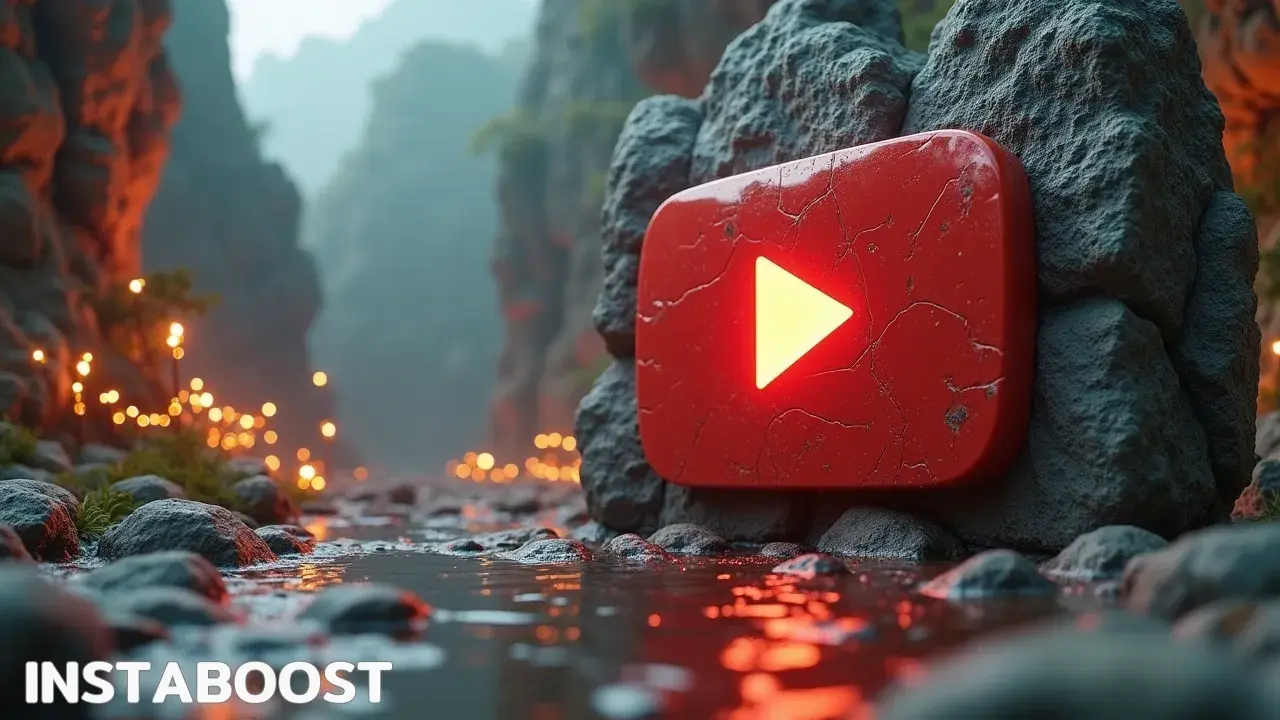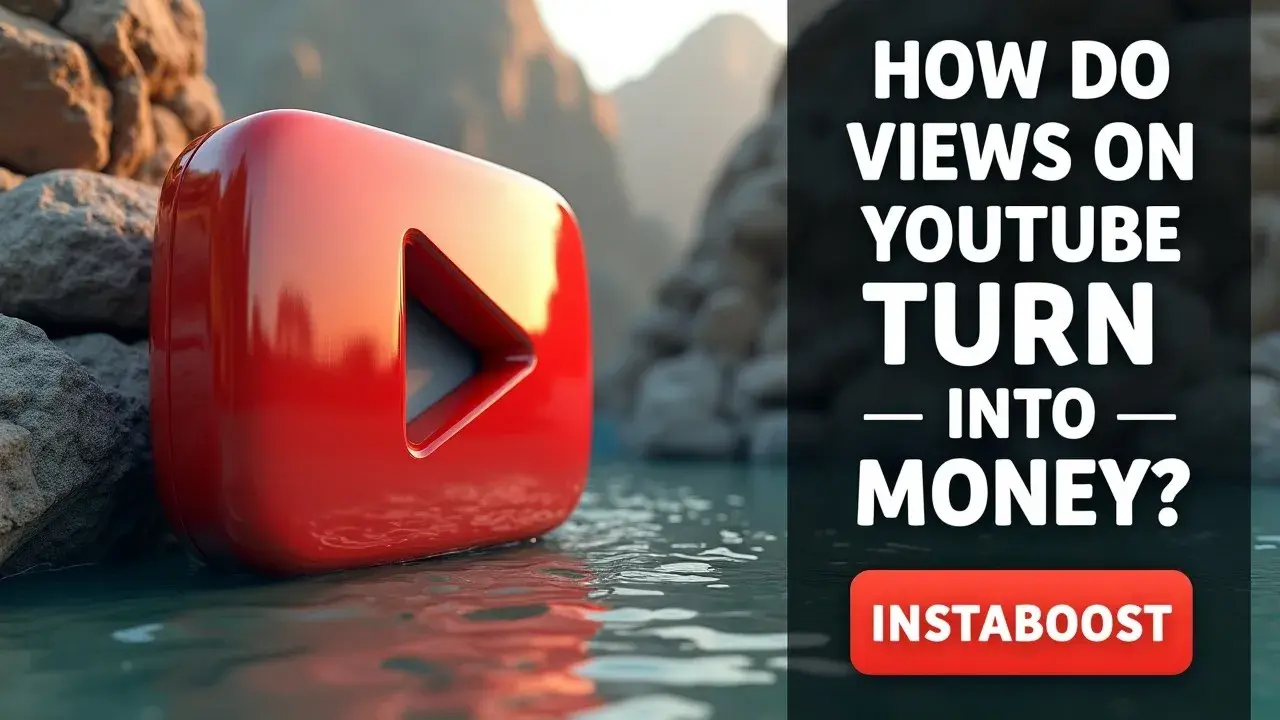How Do Views on YouTube Turn Into Money?
Views lead to revenue when audience fit and watch time align. Ads and payouts follow as more viewers stay past the first minute, turning attention into monetizable sessions. Tracking retention and small increases in returning viewers shows whether content holds interest long enough to support consistent earnings. Focus on timing, fit, and measurement to convert view spikes into stable revenue and channel growth.
From Watchers to Revenue: What Actually Converts
Views turn into money when attention compounds, not when a counter ticks up. A thousand casual clicks with weak watch time won’t move the needle, but a smaller crowd that stays, comments, and comes back often does. The ad engine prices your views based on context – topic, viewer location, device – and on quality signals like average view duration, end-screen clicks, and real comments that show your video didn’t just autoplay past someone’s brain. That’s why “how much do YouTube views pay” is the wrong starting question. The useful question is how you create sessions that hold; if you open strong, keep retention through the first minute, and earn a second video from the same viewer, you unlock better ad inventory and higher RPMs, and you’ll naturally reach more YouTube viewers as those signals compound.
Pair that with clean analytics – segment by traffic source, check audience retention dips, and measure returning viewers week over week – and you’ll know when to double down. Early momentum from targeted promotion, a reputable ads test, or a smart creator collab can be a real lever when it’s matched to your audience intent and you track lift beyond the spike. Treat every tactic as fuel for the same engine – retention signals that tell YouTube your video deserves premium placement.
Even non-ad revenue – memberships, affiliate links, sponsors – works when your content earns trust and your calls to action show up after viewers are invested, not before. The crisp insight still holds: money follows minutes. If you build for sustained watch time first, the ad auction, brand deals, and affiliate conversions meet you where your audience already is.
Even non-ad revenue – memberships, affiliate links, sponsors – works when your content earns trust and your calls to action show up after viewers are invested, not before. The crisp insight still holds: money follows minutes. If you build for sustained watch time first, the ad auction, brand deals, and affiliate conversions meet you where your audience already is.

Proof That Attention, Not Hype, Pays
The breakthrough didn’t feel big. It felt like quiet relief. A channel we advise stopped chasing viral spikes and tightened audience fit: one topic cluster, one viewer promise, consistent cadence. The first sign was retention curves flattening after minute one.
Then end-screen clicks inched up. Then a slow, steady rise in returning viewers. That trio – watch time density, session continuation, repeat visits – told YouTube’s ad engine these weren’t empty views, so RPM in higher-value geos crept up even before subscriber count did. If you’re wondering how views on YouTube turn into money, this is the hinge: quality signals recalibrate what each view is worth. You can accelerate with targeted promotion when it’s matched to intent and measured with clean analytics. Reputable placements that bring in viewers likely to finish and comment beat broad, cheap blasts that inflate impressions and drag down your averages.
Creator collabs work the same way when the audience overlap is real and the hook is tested. Build a testing loop: two thumbnails, one title angle, one retention experiment per upload. Protect the data by avoiding stacked changes mid-cycle. Track average view duration, end screen CTR, and unique viewers who returned week over week; those are the same levers you’ll pull when you expand your YouTube audience without distorting the signal. When those rise together, your ad bids and brand interest usually follow. If you use paid boosts, cap frequency and segment by region so you’re not mixing low-CPM traffic into a high-CPM story. The non-obvious insight is that small, compounding behavioral signals can shift your pricing tier long before you see it in payouts, which is how steady revenue builds while others chase the counter.
Turn Views Into Value: The Compounding Attention Play
Content without direction is just noise with good design. Treat every upload like a testable asset in a compounding system – one audience, one promise, one next action. If you want YouTube views to turn into money, engineer retention before reach. Set tight hooks that set expectations in the first five seconds, add visual anchors every 20 – 30 seconds, and use mid-roll teases that point to the payoff so average view duration stays strong enough for higher RPM. Pair that with clean analytics: label topic clusters, segment by viewer location and device, and compare retention curves week over week to spot drop points that quietly tax ad pricing.
Promotion works best when it matches intent, so line up collabs with neighboring creators, run targeted ads to proven watchalikes, and put a small trial budget behind your highest-retention videos to build early momentum without polluting your data; resist vanity metrics and treat third‑party boosts, including services like buy real YouTube likes now, as noise that can distort testing signals. Ask for real comments with a specific prompt and respond quickly. Those exchanges validate quality to the system and nudge session continuation through end screens and playlists. If you offer memberships, affiliates, or a course, place those CTAs where viewers typically stay past the minute mark so attention turns into revenue beyond ads.
This isn’t about avoiding promotion – it’s about using reputable channels, timing spend after you’ve proved watch time density, and running a tight testing loop so each dollar amplifies what already works. The non-obvious upside is that when you stabilize retention inside a coherent topic cluster, you lift ad value for adjacent uploads too, so your next video starts closer to monetizable impact than your last.
Stop Chasing Virality; Start Pricing Attention Correctly
Powered by caffeine and a few questionable choices, here’s the part that matters. People will say, “viral views grow faster,” and they do on charts, not on RPM. If you care about how YouTube views turn into money, the practical truth is that hype buys impressions while attention sets price. Those retention curves you flattened after minute one aren’t vanity. They’re pricing signals to the ad auction. When the same viewers finish videos, click into another in your cluster, and leave real comments, the system infers intent, opens the door to higher-yield bids, and your RPM tends to rise in better geos.
That doesn’t mean skipping accelerants. It means pairing them with fit. Targeted promotion works when it mirrors your organic audience and protects session length, and even when you lean on a trusted YouTube video view service, the benchmark is whether those sessions extend and convert into follow-on views. Creator collabs work when they tighten the promise, not widen it. Paid tests are fuel if they come from reputable placements, are capped, and are measured against watch time density and returning viewer bumps, not just CTR. If you want early momentum, buy it like a scientist.
Use small budgets, clean analytics, a safeguard of two retention breakpoints, and a 7-day holdout to confirm lift. The compounding play still holds – one topic cluster and one next action – and you’re using ads and partnerships as amplifiers for proven resonance. That’s how views turn into revenue you can build on. Retention signals first, distribution second, then rinse in a testing loop. For anyone searching “how much does YouTube pay per view,” the nuanced answer is that per-view payout rises when audience fit tightens and session continuation climbs. Engineer those inputs, and the money follows.
Bankable Attention, On Purpose
This didn’t wrap up. It broke open. The money math on YouTube isn’t a mystery. It’s a method. Treat every view like a price quote the market gives your promise, and raise that price by stacking retention signals with intent‑rich topics, clean analytics, and one clear next step per video. If you want more than ad pennies, build a path: watch to the end, comment with substance, click the pinned offer, and come back next week.
That’s where RPM compounds. Paid boosts work when you use them surgically. Promote the video that already holds 60% retention at the midpoint, seeded with real comments and a collaborator who shares your audience, and only layer distribution that actually moves qualified viewers, including options to amplify audience reach through sharing without polluting your dataset.
Skip vanity traffic that inflates impressions but dilutes watch time. Sponsorships and affiliate revenue work when the offer maps to the content’s job‑to‑be‑done – audience fit first, then price. Use a testing loop: two hooks, two CTAs, one promise. Kill what falls below your baseline, and scale what increases average view duration and drives measurable actions. Collabs are accelerants when your editorial DNA overlaps. If the fit is off, you pay with churn.
For search‑based videos, target intent queries that buyers actually use – how‑to and comparison terms that lift both CPM and conversion. Keep safeguards: cap experiments to a time window, tag traffic sources, and separate creator‑brand deals from evergreen library content so you can attribute revenue cleanly. The non‑obvious upside is that when you engineer retention before reach, every new viewer arrives in a higher‑price environment, so even modest growth prints steadier cash per view. That’s how views on YouTube turn into money you can plan with.















